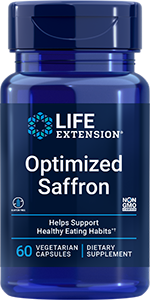| Because of familial ALS's close association with free radical damage, oxidative stress has emerged as a leading theory to explain sporadic ALS. Free radicals are molecules that have an unpaired electron. They can react with other molecules in the body that contain oxygen, thereby creating reactive oxygen species such as nitric oxide and the hydroxyl radical. Free radicals have been implicated in a large number of diseases. They can be neutralized to some degree with antioxidants such as vitamins C, E, or A; selenium; and coenzyme Q10. It is important to understand, however, that free radical damage is likely only one factor among many involved in ALS. In reality, ALS is probably caused and aggravated by a number of conditions that work together. By designing a careful regimen of nutrients and supplements, individuals with ALS may be able to blunt the effects of individual factors, thereby slowing the progression of the disease and lessening its symptoms. Conventional medicine, which has fared poorly in treating ALS, also attempts to lessen symptoms by slowing progression. Currently only one drug is approved for ALS patients, and it has been shown to extend life span by only two months (Lacomblez L et al 1996). Vitamin E has attracted significant attention from ALS researchers as a result of its antioxidant properties. Vitamin E protects cell membranes against a process known as lipid peroxidation (Cameron A et al 2002). Lipid peroxidation is the breakdown of the cell membrane, which could play a role in degenerative diseases such as ALS. A recent study in humans indicated that vitamin E can help prevent ALS because of its antioxidant properties (Ascherio A et al 2005)). | Consumer Alert
Potassium iodide and nuclear emergency
When a nuclear reactor melts down, an explosion can occur that spreads radioactive iodine and other carcinogens into the atmosphere. Once released in the air, radioactive iodine can then be inhaled into the lungs. Radioactive iodine can also penetrate the food and water supply, leading to further contamination and potential exposure. Any of these pathways into the body can lead to what is called internal contamination. Once internal contamination with radioactive iodine occurs, the body immediately begins to absorb this compound. Nearly all of the absorption of radioactive iodine occurs in the thyroid gland, leading to thyroid damage and a dramatic increase in cancer risk, particularly for young children. People are very concerned now, but the reality is that there is unlikely to be a problem that reaches the United States. People are imagining a nuclear explosion like an atomic bomb which is unlikely at the Japanese plants. The small current explosions are not related to nuclear types of explosion. They are caused by certain gases (mostly hydrogen) that can build up and ignite, but it is not a nuclear/atomic bomb type of explosion. Also, the nuclear event at Chernobyl cannot be compared to what is going on in Japan. Chernobyl reactors used more dangerous graphite materials in their reactors and were built without a containment building. The Japanese plants use safer reactor technology and are encased with a containment building that the reactor at Chernobyl didn’t have. Preventing damage to the thyroid gland is critical to the short-term and long-term health of those exposed to radioactive iodine. Positioned at the base of the neck, the thyroid gland produces thyroid hormone, which has effects on every organ, tissue, and cell in the body. These effects relate to energy levels, heart rate, muscle strength, skin health, menstrual cycles, cognition, and cholesterol metabolism.
|
















